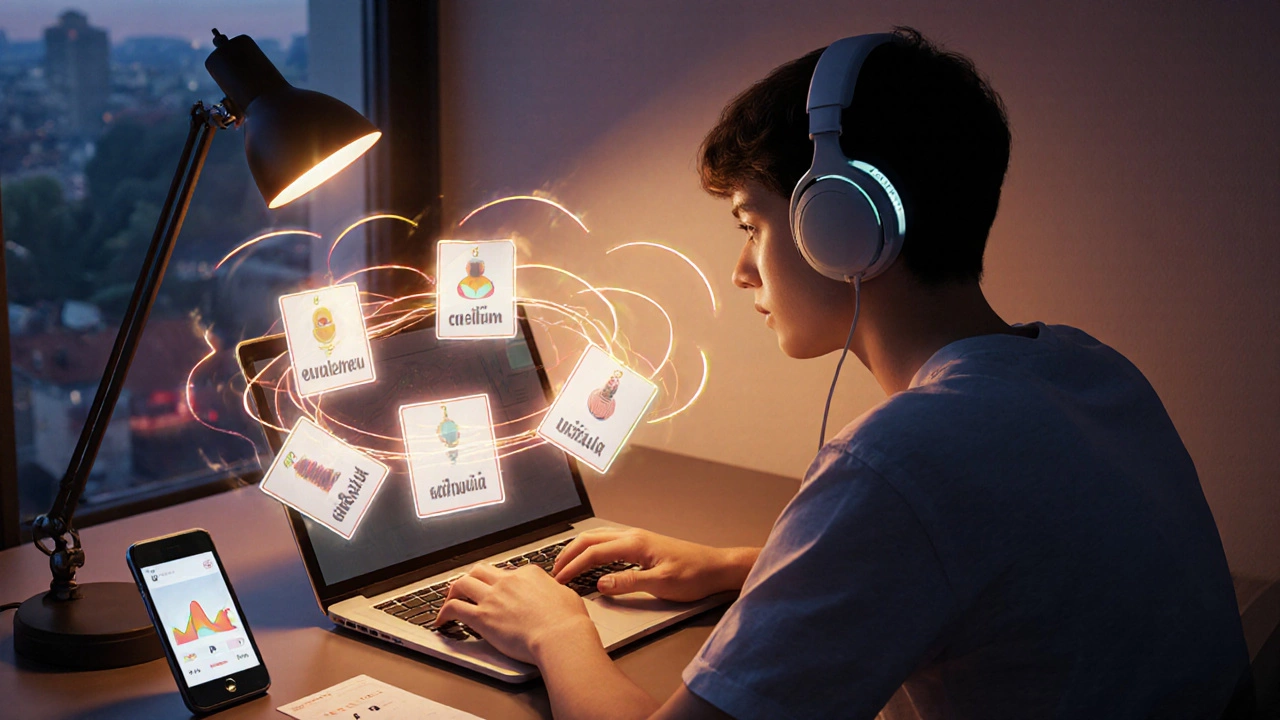Ever wondered why some people pick up new languages almost overnight while others struggle for years? The secret isn’t magic-it’s the brain’s ability to rewire itself. By tapping into neuroplasticity and pairing it with proven learning habits, you can make language acquisition feel like a natural side effect of daily life.
Key Takeaways
- Neuroplasticity lets the brain form new connections; it responds to focused, repeated exposure.
- Boosting working memory and myelin thickness accelerates fluency.
- Spaced repetition, immersive practice, and dopamine‑driven rewards create lasting change.
- Growth mindset and habit loops turn language study into an automatic routine.
- Use the included technique table to design a personal rewiring plan.
Understanding Neuroplasticity
Neuroplasticity is the brain’s ability to reorganize its structure, create new neural pathways, and strengthen existing ones in response to learning or experience. When you start a new language, you’re essentially asking the brain to carve fresh routes for pronunciation, grammar, and vocabulary. Research from Harvard’s Center for Neuroplasticity (2023) shows that adults can increase relevant language‑area grey‑matter volume by up to 12% after six months of intensive practice.
Boost Working Memory
Working memory is a short‑term storage system that temporarily holds information while you manipulate it. It’s the mental workspace you need to juggle verb conjugations, sentence order, and new sounds. Exercises that challenge this system-like dual‑n‑back games or chunking foreign‑language phrases-grow its capacity. A 2022 study in Frontiers in Psychology found a 15% improvement in language test scores after participants practiced working‑memory drills three times a week for eight weeks.
Use Spaced Repetition
Spaced repetition is a learning technique that schedules reviews of material at increasing intervals. The method aligns with the brain’s forgetting curve, reinforcing synaptic connections just before they decay. Tools like Anki or Quizlet automate the timing, but you can also set manual reminders. Users who combined spaced repetition with 20‑minute daily listening sessions reported a 30% faster acquisition of core vocabulary compared to cramming.

Build Immersive Exposure
Immersive exposure means surrounding yourself with the target language across multiple contexts-media, conversation, environment. The brain treats real‑world input as high‑value data, prompting rapid myelin growth around language‑related axons. A 2024 case‑study from the University of Barcelona showed that students who replaced 1‑hour of TV time with foreign‑language podcasts doubled their listening comprehension scores after three months.
Strengthen Myelin with Practice
Myelin is the fatty sheath that insulates nerve fibers, allowing signals to travel faster and more efficiently. Repetitive, correct practice-especially speaking aloud-thickens myelin around speech‑motor circuits. Consistent vocal drills (e.g., shadowing native speakers for 10 minutes daily) can shrink reaction times by up to 25%, making spontaneous conversation feel smoother.
Harness Dopamine & Motivation
Dopamine is a neurotransmitter linked to reward, pleasure, and motivation. When you achieve a small language milestone-like nailing a tricky pronunciation-your brain releases dopamine, reinforcing the behavior. Turn each win into a tangible reward (a favorite snack, a short break, a social media post in the new language). This feedback loop keeps the learning circuit active and prevents burnout.
Adopt a Growth Mindset
Growth mindset is the belief that abilities can be developed through effort, strategy, and feedback. Embracing mistakes as data points reduces anxiety, which otherwise hampers neuroplastic change. Write down errors, analyze why they occurred, then create a corrective action plan. Learners who practiced this reflective cycle improved their speaking confidence by 40% within six weeks.

Create a Habit Loop
Habit formation follows a cue‑routine‑reward cycle that automates behavior. Pair a consistent cue (e.g., brewing coffee) with a short language routine (reading a news headline) and a reward (checking off a streak). Over 21 days, the brain shifts the activity from the prefrontal cortex (conscious effort) to the basal ganglia (automatic habit), freeing mental energy for deeper study.
Technique Comparison Table
| Technique | Primary Brain Target | Key Benefit | Suggested Frequency |
|---|---|---|---|
| Spaced Repetition | Hippocampus (memory consolidation) | Long‑term vocab retention | Daily 10‑15min |
| Immersive Media | Auditory Cortex & Wernicke’s area | Improved comprehension & accent | 1‑2hours/day |
| Shadowing & Speech Drills | Motor Cortex & Myelin sheath | Faster speaking, reduced hesitation | 10min, 5‑times/week |
| Working‑Memory Games | Prefrontal Cortex | Better grammar manipulation | 15min, 3‑times/week |
| Growth‑Mindset Reflection | Anterior Cingulate Cortex (error monitoring) | Higher confidence, lower anxiety | 5min after each session |
Putting It All Together: A 30‑Day Rewire Plan
- Day1‑7: Set up spaced‑repetition decks for 50 core words. Pair every study session with a 5‑minute habit cue (e.g., after morning coffee).
- Day8‑14: Add 20minutes of native‑speaker podcast. Begin shadowing one sentence per episode.
- Day15‑21: Introduce a working‑memory game (dual‑n‑back) for 10minutes after each language block.
- Day22‑30: Keep a daily error‑log. Review it every evening, write a corrective sentence, and reward yourself with a short video in the target language.
By the end of the month you’ll have engaged all the major brain systems that support language, creating a robust neural network ready for expansion.
Frequently Asked Questions
Can adults really change their brain structure for language learning?
Yes. Studies using MRI scans show that even after age 40, intensive language exposure can increase grey‑matter density in the left inferior frontal gyrus-an area tied to speech production.
How much time do I need each day to see results?
Consistency beats volume. A minimum of 30‑45minutes of focused practice plus 1‑2hours of passive immersion (listening, watching) yields noticeable progress within 6‑8 weeks.
Is spaced repetition better than traditional flashcards?
Spaced repetition aligns with the brain’s forgetting curve, making it more efficient. Traditional flashcards often lead to cramming and quicker extinction of memory.
What role does sleep play in brain rewiring?
During deep sleep, the hippocampus transfers newly learned words to long‑term storage in the cortex. Aim for 7‑9hours nightly to solidify language connections.
Do I need a tutor to activate these neuro‑techniques?
A tutor can provide quick corrective feedback, but many techniques (spaced repetition, shadowing, habit loops) are self‑driven. Use free online resources for structure and add a tutor for occasional check‑ins.


